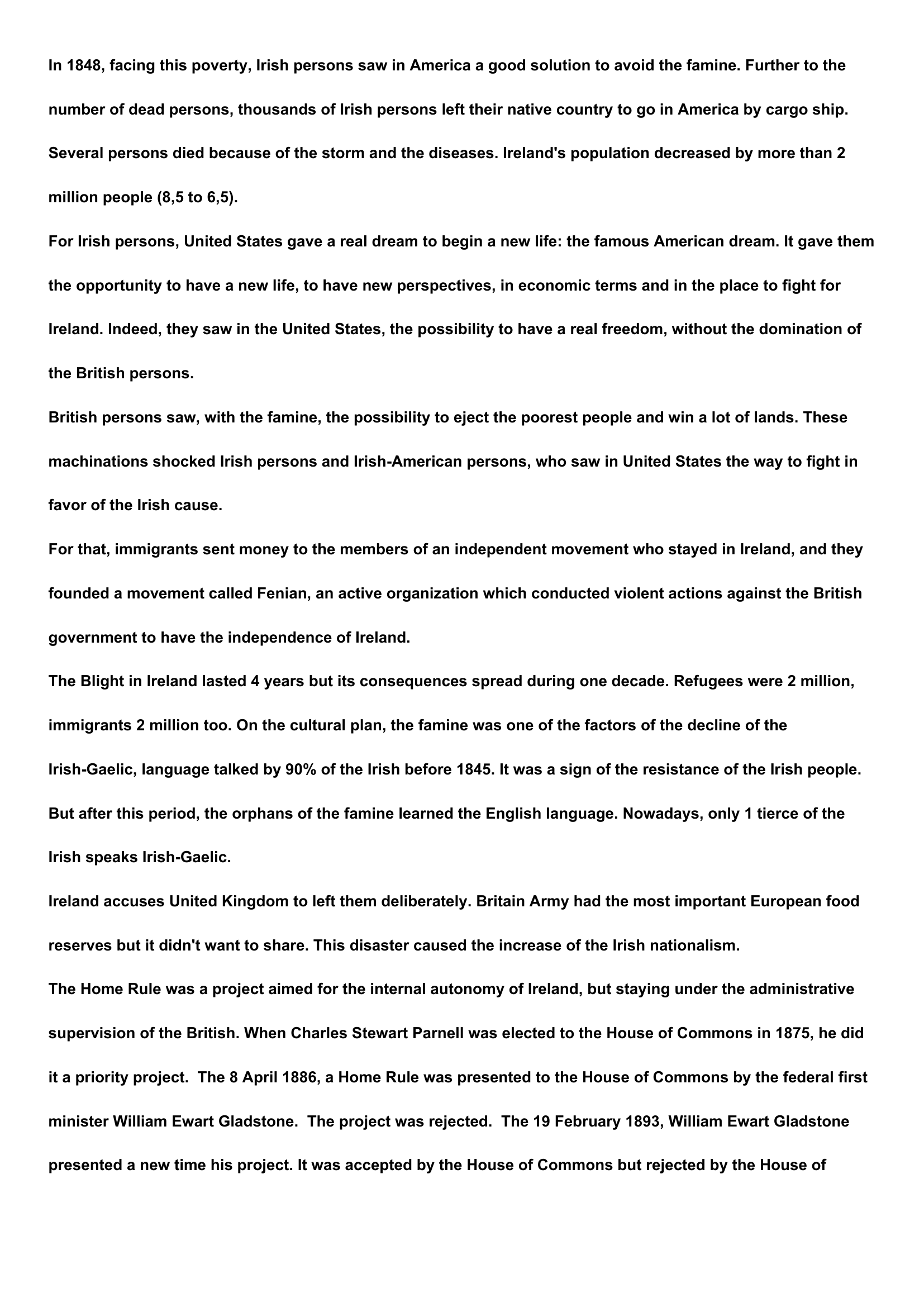Famine in Ireland
Publié le 25/10/2013

Extrait du document
«
In 1848, facing this poverty, Irish persons saw in America a good solution to avoid the famine.
Further to the
number of dead persons, thousands of Irish persons left their native country to go in America by cargo ship.
Several persons died because of the storm and the diseases.
Ireland's population decreased by more than 2
million people (8,5 to 6,5).
For Irish persons, United States gave a real dream to begin a new life: the famous American dream.
It gave them
the opportunity to have a new life, to have new perspectives, in economic terms and in the place to fight for
Ireland.
Indeed, they saw in the United States, the possibility to have a real freedom, without the domination of
the British persons.
British persons saw, with the famine, the possibility to eject the poorest people and win a lot of lands.
These
machinations shocked Irish persons and Irish-American persons, who saw in United States the way to fight in
favor of the Irish cause.
For that, immigrants sent money to the members of an independent movement who stayed in Ireland, and they
founded a movement called Fenian, an active organization which conducted violent actions against the British
government to have the independence of Ireland.
The Blight in Ireland lasted 4 years but its consequences spread during one decade.
Refugees were 2 million,
immigrants 2 million too.
On the cultural plan, the famine was one of the factors of the decline of the
Irish-Gaelic, language talked by 90% of the Irish before 1845.
It was a sign of the resistance of the Irish people.
But after this period, the orphans of the famine learned the English language.
Nowadays, only 1 tierce of the
Irish speaks Irish-Gaelic.
Ireland accuses United Kingdom to left them deliberately.
Britain Army had the most important European food
reserves but it didn't want to share.
This disaster caused the increase of the Irish nationalism.
The Home Rule was a project aimed for the internal autonomy of Ireland, but staying under the administrative
supervision of the British.
When Charles Stewart Parnell was elected to the House of Commons in 1875, he did
it a priority project. The 8 April 1886, a Home Rule was presented to the House of Commons by the federal first
minister William Ewart Gladstone.
The project was rejected.
The 19 February 1893, William Ewart Gladstone
presented a new time his project.
It was accepted by the House of Commons but rejected by the House of.
»
↓↓↓ APERÇU DU DOCUMENT ↓↓↓
Liens utiles
- La famine au soudan
- Education in Great Britain ? Education is compulsory from the age of 5 (4 in Northern Ireland) to the age of 16.
- VOLTAIRE (1694-1778) Vivre avec son temps On dit proverbialement : « Manger son blé en herbe ;être pris comme dans un blé ;crier famine sur un tas de blé.
- Civil rights in Ireland
- Ireland, John - compositeur de musique.

































